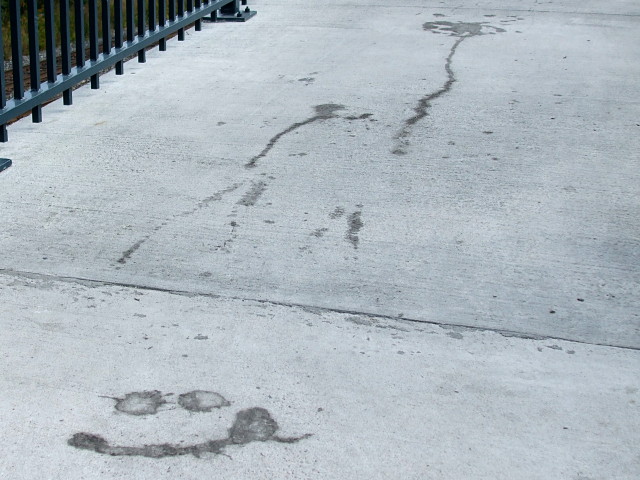
The spill on this pedestrian bridge may have started out accidentally, but I’m sure it didn’t finish up that way.
Random Wanderings and Wonderings

The spill on this pedestrian bridge may have started out accidentally, but I’m sure it didn’t finish up that way.
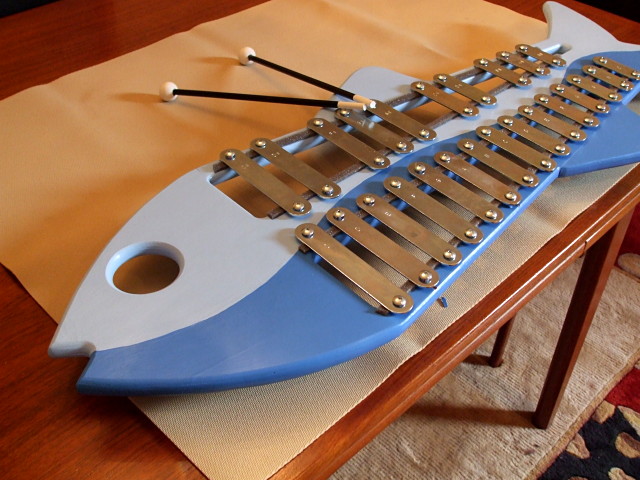
It’s funny how weekend projects always seem to take longer than you expect. This one started in October, when I saw a xylophone kit at Lee Valley and decided that it would make a good gift for my nephew’s upcoming seventh birthday. One weekend stretched into three partial weekends and a couple of early mornings and late nights, but these things always do.
I’m not normally the kind of woodworker who plans in advance: I usually have an idea in my head and just dive madly into the project, making up the details as I go. But for things that I’m giving away or that have deadlines, I try to be a little more careful. I even did sketches and a full-scale model for this one. The sketches helped me come up with what I think is a much better design than the one I initially had, and the model allowed me to identify a weak point in my initial plan and improve the final piece accordingly.
Check out the gallery after the jump to see the whole project.
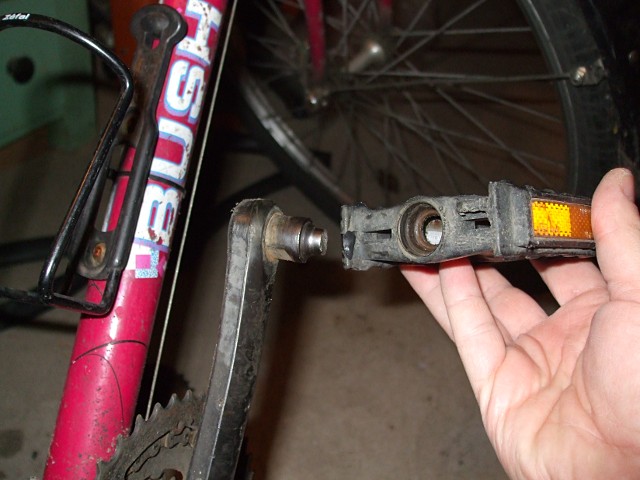
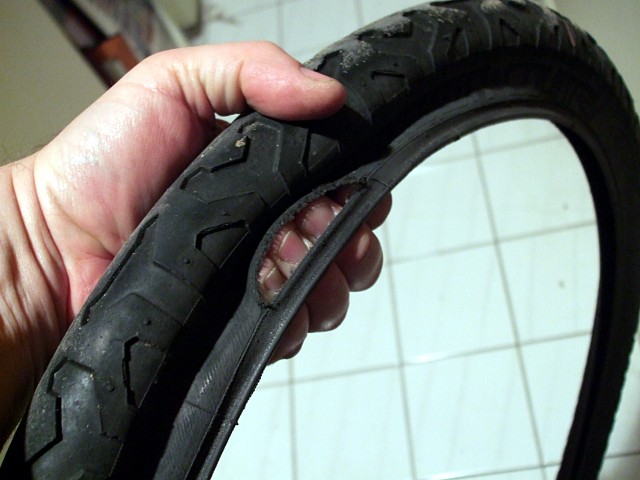
I’m not superstitious, but I had a seemingly endless run of bad luck on the road over the course of a week. Of the five days I rode, I had equipment or brain failure on four of them:
This Thursday, I countered my run of bad luck by switching bikes and giving my usual commuter a rest. It’s due for a new drivetrain anyway, so here’s hoping that it’ll be happier next week with a whole bunch of new components.
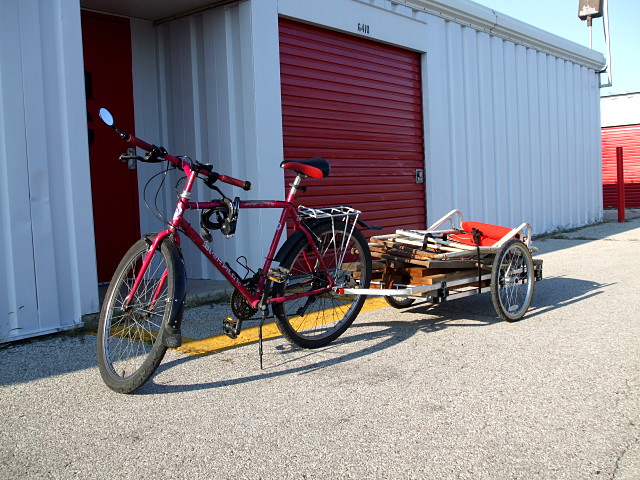
My homebuilt bike trailer using the Wike DIY trailer kit recently passed the 100 km mileage mark and I wanted to share some thoughts about it. First off, I have zero regrets about buying the kit and only some minor reservations about my construction. Mostly, I’m as pleased as I can be to have a nice big trailer that can haul virtually anything I want it to. In all, it’s saved me more than a dozen trips that would otherwise have required the car. Some of its duties since its June inauguration have included:
There are also some things it hasn’t done yet:
Despite my early concerns, the pop rivets I used to bind the aluminum tubes to the kit brackets have held up well, and not a single one has come loose or broken. So far so good. I’m still prepared to replace them with screws or bolts if necessary. The oak cargo bed is also holding up well, with no noticeable wear, cracks, or other problems. Even though I planed it down pretty thin, it’s proven to be more than strong enough. This oak stuff is pretty tough; I bet you could make giant trees out of it.
I’ve used a single-wheel BOB Yak trailer for several years and find that using a two-wheel trailer requires a bit of an adjustment. In particular, the Yak tracks so beautifully behind the bike that I never have to worry where its wheel is when I’m riding: it’s always in line with the rear wheel of the bike. A two-wheel trailer, especially one as wide as mine, tracks very differently around turns. I haven’t yet bounced it into the curb, but it’s only a matter of time. And with a wheel off to each side of the bike, it’s that much harder to manoeuvre all three tracks around potholes and other obstacles.
If I were constructing this trailer today, I’d make some minor changes based on my experience so far:
Also, I’m planning to make a couple of additions over the winter:
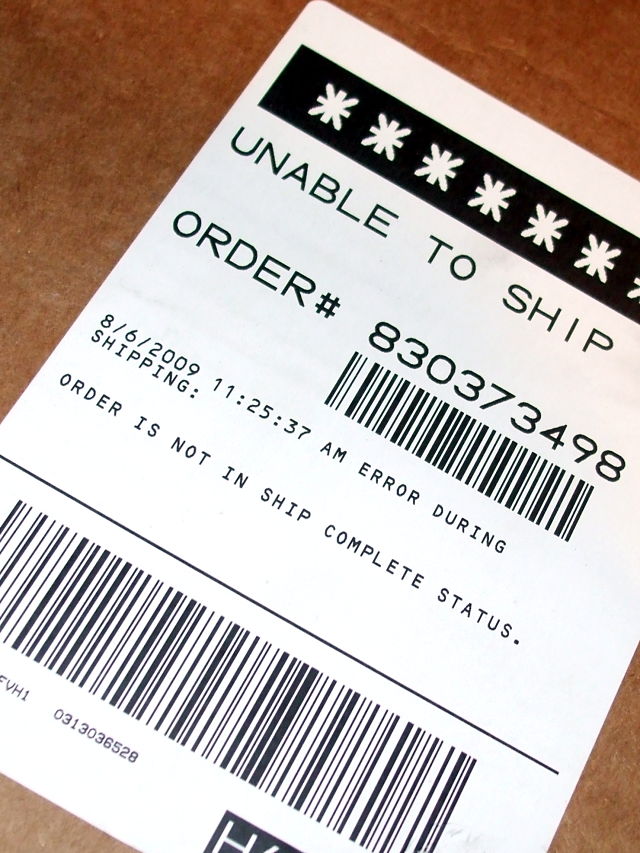
This was the shipping label on a package I received a while ago. I’m still not sure how it actually arrived at the right place, but you can bet that I triple-checked the contents to ensure that everything was included and in working order.
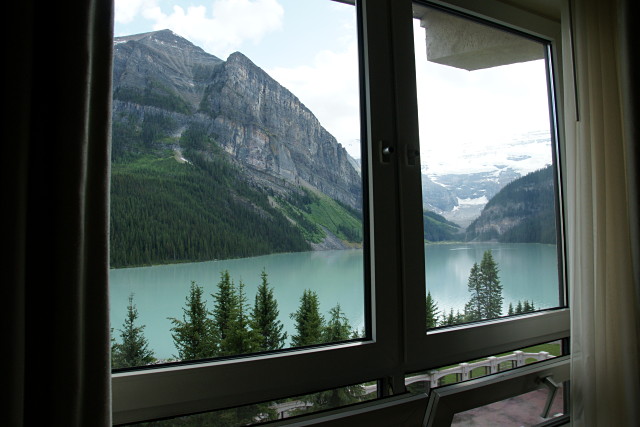
As I’m writing this entry, the Weather Network informs me that it’s -13 degrees in Lake Louise. When we were there after our drive down the Icefields Parkway in July, the temperature was closer to 13 on the positive side of the thermometer. Temperature swings like that make me appreciate Toronto’s (and thus Dodgeville’s) more temperate weather.
When we were planning our summer trip, a discount code supplied by one of Risa’s friends allowed us to book a night at the Chateau Lake Louise for about the same cost as a lesser hotel in town. We paid a slight premium for a room with a lake view, and I have to say, it was totally worth it. I mean, look at that view. Imagine arriving to that after a full day in the car, and then waking up to it again the next morning. It was our only night of luxury on the trip. It’s not that the other hotels were ratholes or anything—all of our accommodations were quite satisfactory—but the view and the service at the Chateau Lake Louise convinced me that any future vacations must also include at least one night in a really nice hotel.
The only problem with Lake Louise is that the entire area around the lake is controlled by the hotel, and the activites are priced to match. As Risa said, the hotel has its own little ecosystem there. There are lots of free things to do, but if you want to eat, rent a canoe, or go for a horseback ride, you’re going to pay Fairmont rates whether or not you’re staying at the Chateau. When you count our two meals and a canoe rental, the room itself totaled less than half of our one-night tab. Still, I’m really glad we stayed at the Chateau rather than in town, which is actually several kilometres away from the lake and nothing to write home about.
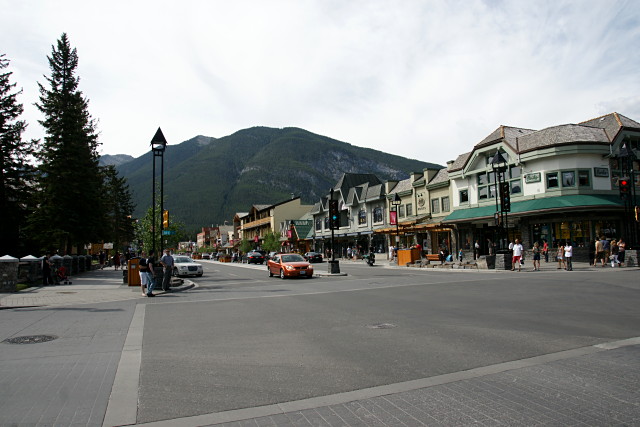
Reluctantly leaving Lake Louise behind, we drove down to Banff, where we had arranged much more modest lodgings; no Banff Springs Hotel on this trip. Even though Banff feels much more crowded and commercial than Jasper, there are still some nice spots that are surprisingly deserted.
My strongest memories of coming to Alberta as a kid are the view of Sulphur Mountain looking up Banff’s main street and going to McDonald’s in Edmonton. I know that we went to Lake Louise, Jasper, Drumheller, Frank, and about a million other places, but I have little or no memory of them. But as much as Banff (the town) stood out for me last time, I have to say that I was a little underwhelmed this time around. Certainly after coming from Jasper and Lake Louise, Banff was a bit of a letdown. Oh sure, it’s beautiful and all that, but the town is a little too busy for its own good. Streets were crowded, restaurants were impossible to get seats in, stores were packed to the gills, and I always felt like I was in someone’s way. Every restaurant we went to was too busy to serve us, and we spent way more time waiting than eating. I could have forgiven it all had the service been decent, but it wasn’t. As I said at one meal, the service was shockingly rude even by Toronto standards. Fortunately, we spent most of our time outside of town where it felt a little less hectic.
Anyway, read on for the second-last (and quite belated) gallery from this year’s vacation.
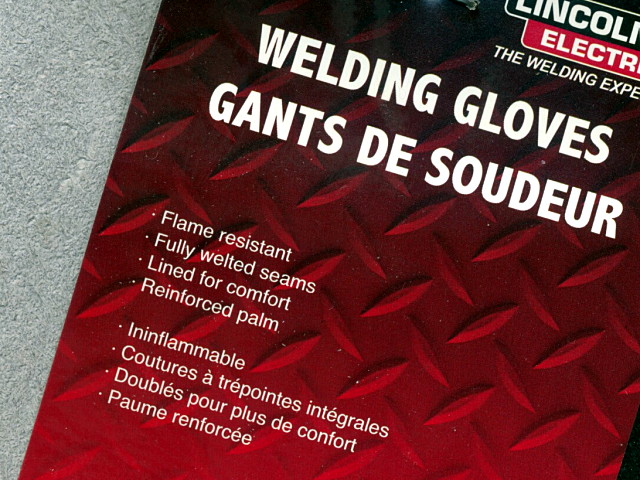
It’s bad enough that in English, flammable and inflammable mean the same thing, but I didn’t realize that the same is also true in French. I always hear that English is such a flexible language, so I’d like to begin a campaign to borrow the French term for something that won’t burn, the wonderfully elegant ininflammable, as seen on the tag for these welding gloves. Furthermore, I think we should encourage more constructions like this: ininvaluable, ininhabitable, inintense, the possibilities are ininnumerable.
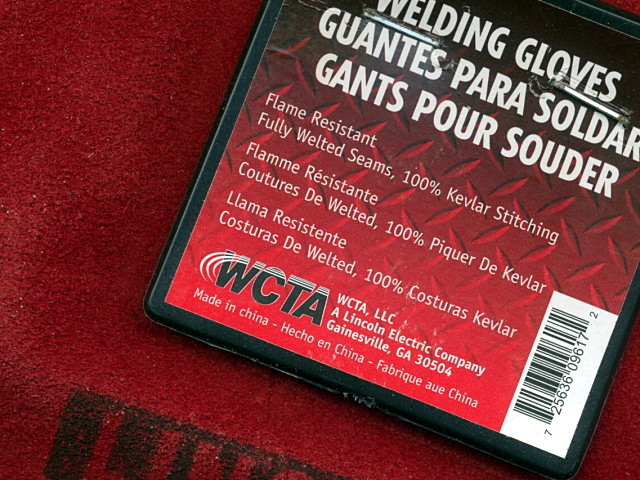
If I could only read the Spanish text for these welding gloves, I’d come away thinking that Kevlar makes them good for handling llamas. I suppose I’ll have to look elsewhere to satisfy my steer-wrangling welding glove requirements.
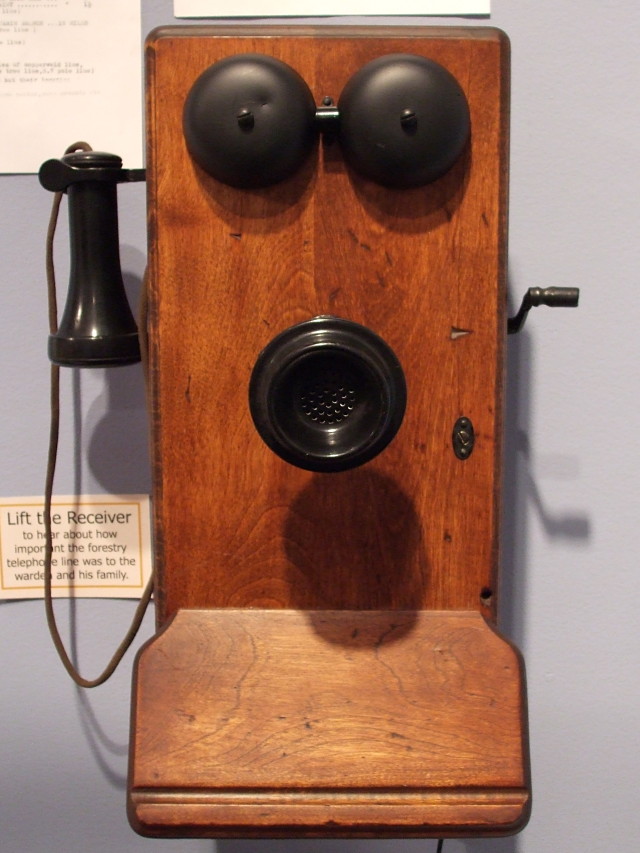
This old-time phone in the Jasper-Yellowhead Museum was shocked when told how far its lineage has progressed.
The Humphrey monument just outside the Mount Pleasant Mausoleum is instantly recognizable to anyone who travels past the Humphrey Funeral Home on Bayview just outside Mount Pleasant Cemetery.
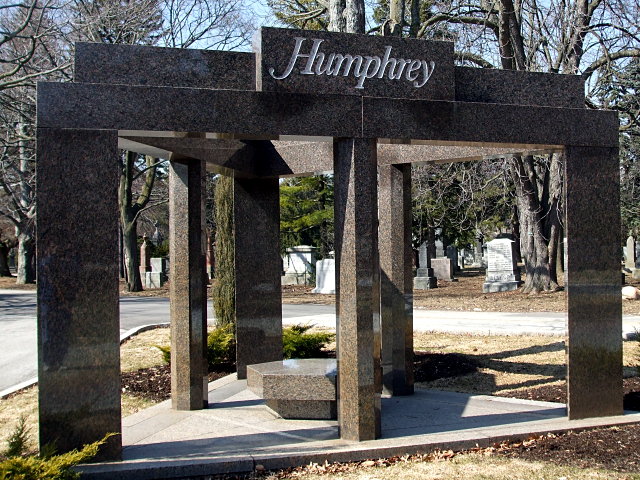
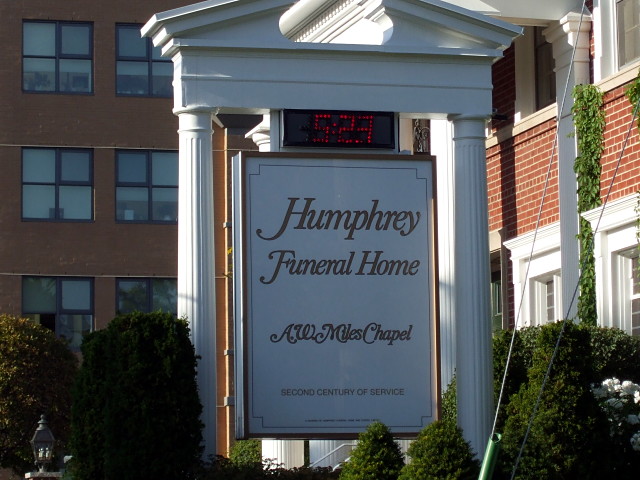
The Humphrey monument is just a few steps away from the Weston monument previously featured in this space, and only about 2 km away from the funeral home.
The death of logos is an occasional series that looks at logos or wordmarks of organizations that appear on cemetery monuments.
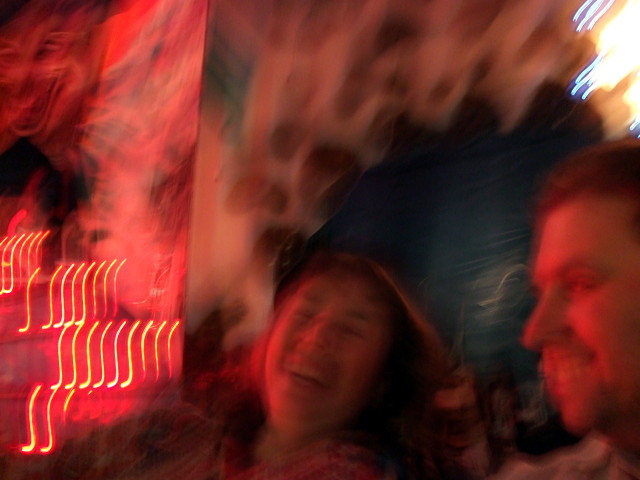
It’s really hard to take a picture while the Polar Express cranks up to top speed and whips you backwards around the track. Holding your arm out in the universal self-portrait position, you can only hope to capture atmosphere; to hell with niceties like focus, exposure, and composition.
A day at the Ex capped with a nighttime ride on the Polar Express marks the unofficial end to summer. It just wouldn’t be the same without it.
Do I want to go faster? Damn right. Crank it.